Last week, at 8 September, we posted twelve rare, vintage postcards, recently acquired by collector Didier Hanson. We promised you a follow-up while Didier sent us several other interesting scans. Today a post on twelve more a-century-old postcards including a series made for that enigmatic German production Das Mirakel/The Miracle (Cherry Kearton, Max Reinhardt, 1912) starring the Italian diva Maria Carmi as the Madonna. We end this post with four cards of beautiful Vera Kholodnaya, the ‘Queen of Screen’ of the Russian Empire.

German postcard by Verleih Hermann Leiser, Berlin-Wilmersdorf, no. 7267. Publicity still for Das Mirakel/The Miracle (Cherry Kearton, Max Reinhardt, 1912). Collection: Didier Hanson.

German postcard by Verleih Hermann Leiser, Berlin-Wilmersdorf, no. 7268. Publicity still for Das Mirakel/The Miracle (Cherry Kearton, Max Reinhardt, 1912). Collection: Didier Hanson.
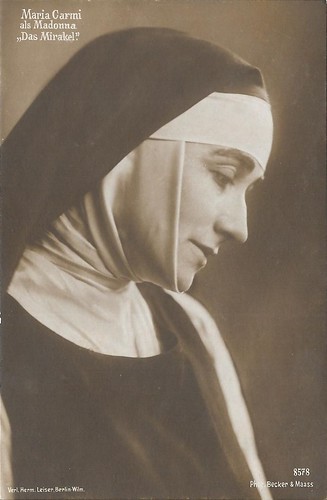
German postcard by Verleih Hermann Leiser, Berlin-Wilmersdorf, no. 8578. Photo: Becker & Maass. Publicity still for Das Mirakel/The Miracle (Cherry Kearton, Max Reinhardt, 1912). Collection: Didier Hanson.
With her aristocratic air, her severe looks but also her sweet undertones, Italian silent film star and stage actress Maria Carmi (1880-1957) was the cinematic translation of the 19th century Primadonna.
Carmi was born Norina Gilli in Firenze (Florence), Italy, in 1880. When she married German comedy writer Karl Volmöller she moved to Berlin, where she attended Max Reinhardt's acting school at the Deutsches Theater. She belonged to his company from 1907 to 1909 and used the stage name Maria Carmi.
In 1911, Reinhardt asked her for the pantomime play Das Mirakel/The Miracle written by her husband, Karl Vollmöller. The religious pantomime was originally produced in Germany in 1911 and opened in London on 23 December 1911. Over the years she would give over 1,000 performances of the play.
The next year it was turned into a film, Das Mirakel/The Miracle (Cherry Kearton, Max Reinhardt, 1912). She also appeared in Reinhardts film Eine Venezianische Nacht/A Venetian Night (Max Reinhardt, 1914) with Alfred Abel.
In 1917 Maria Carmi became Princess Norina Matchabelli and in 1924, she and her husband founded the perfume company Prince Matchabelli.
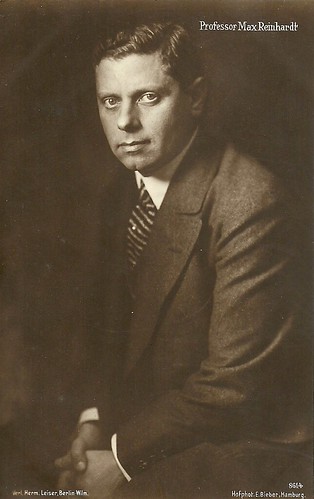
German postcard by Verlag Hermann Leiser, Berlin, no. 8614, 1916. Photo: Hofphot. E. Bieber, Hamburg. Collection: Didier Hanson.
German actor-director Max Reinhardt (1873-1943) was one of the great innovators of the theatre. He also directed several films, including Sumurûn (1910) and Das Mirakel (1912). In 1934, he went into exile and made in Hollywood A Midsummer Night's Dream (1935).
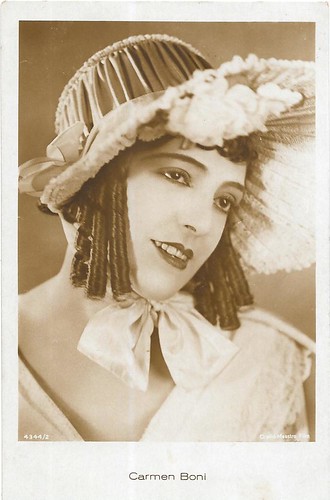
French postcard. Photo: G.L. Manuel Frères. Collection: Didier Hanson.
Italian silent film star Carmen Boni (1901-1963) had a successful career in the Italian cinema of the early 1920s, before moving to Germany where she made one film after another in the late 1920s.
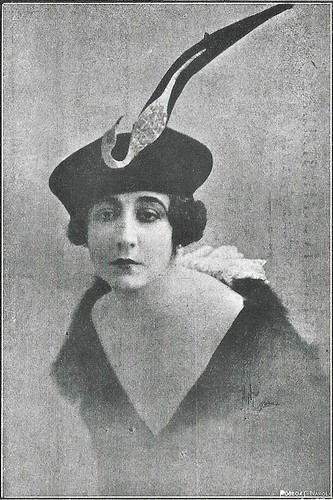
Italian postcard. Photo: Robeo & Co, Napoli (?), Collection: Didier Hanson.
Film diva Leda Gys (1892-1957) starred in ca. 60 dramas, comedies, action thrillers and even westerns of the Italian and Spanish silent cinema. Her claim to fame came with the film Christus (1916), shot in Egypt and Palestine, where Gys performed the Madonna.
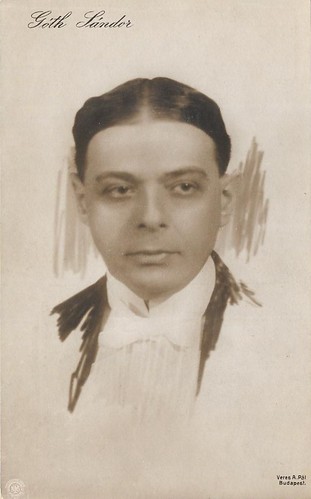
Hungarian postcard. Photo: Pál A. Veres, Budapest. Collection: Didier Hanson.
Hungarian actor and director Sándor Góth (1869-1946) was one of the great pioneers of the Hungarian cinema. During the 1910s, he directed a series of short films for the Hunnia Biográf company, in a style strongly influenced by the stage. In Paris, he appeared in two Hungarian language versions of Paramount films, Az orvos titka/The Doctor's Secret (Tibor Hegedüs, 1930), and Kacagó asszony/The Laughing Lady (Tibor Hegedüs, 1930), which in fact marked the start of Hungarian sound film. As an actor, he was the unparalleled artist of the conversation style. He was characterised by his excellent ability to form characters and to make parodies. Between 1931-39 he taught at the School for Dramatic Arts. One of his books is the interesting Ha Moliere naplót írt volna (1946).

Russian postcard, no. R 42. Collection: Didier Hanson.
Constantin Sergeievich Stanislavsky (Константи́н Серге́евич Станисла́вский) (1863–1938) was a Russian actor and theatre director. The eponymous Stanislavsky method, or simply 'method acting', has had a pervasive influence on the American theatre and cinema, especially in the period after World War II.
Didier can't get enough of her, and neither can we: Vera Kholodnaya (1893-1919), so beautiful, so tragic.
Although she worked only three years for the cinema, she must have made between fifty and hundred short films.
Only 26, the ‘Queen of Screen’ died of the Spanish flu during the pandemic of 1919. Five years later the Soviet authorities ordered to destroy many of the Kholodnaya features.
Only five of Kholodnaya's films still exist. But, thanks to Didier, there are now dozens of her postcards online. To remember her.
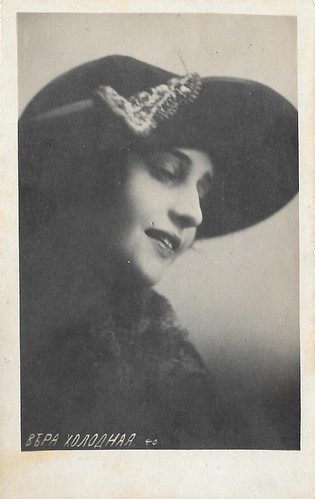
Russian postcard, no. 40. Collection: Didier Hanson.
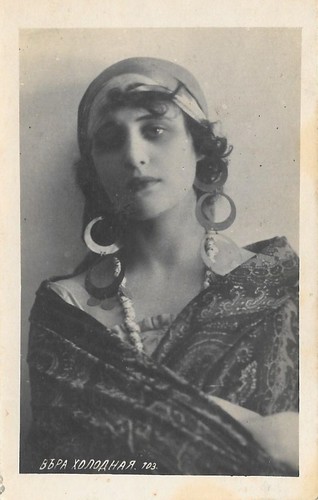
Russian postcard, no. 103. Collection: Didier Hanson.
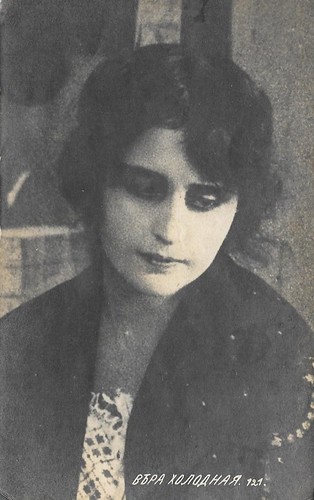
Russian postcard, no. 121. Collection: Didier Hanson.
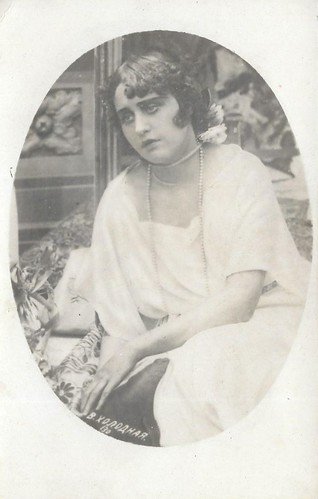
Russian postcard, no. 130. Collection: Didier Hanson.
Thanks, Didier!

German postcard by Verleih Hermann Leiser, Berlin-Wilmersdorf, no. 7267. Publicity still for Das Mirakel/The Miracle (Cherry Kearton, Max Reinhardt, 1912). Collection: Didier Hanson.

German postcard by Verleih Hermann Leiser, Berlin-Wilmersdorf, no. 7268. Publicity still for Das Mirakel/The Miracle (Cherry Kearton, Max Reinhardt, 1912). Collection: Didier Hanson.

German postcard by Verleih Hermann Leiser, Berlin-Wilmersdorf, no. 8578. Photo: Becker & Maass. Publicity still for Das Mirakel/The Miracle (Cherry Kearton, Max Reinhardt, 1912). Collection: Didier Hanson.
Carmi Meets Reinhardt
With her aristocratic air, her severe looks but also her sweet undertones, Italian silent film star and stage actress Maria Carmi (1880-1957) was the cinematic translation of the 19th century Primadonna.
Carmi was born Norina Gilli in Firenze (Florence), Italy, in 1880. When she married German comedy writer Karl Volmöller she moved to Berlin, where she attended Max Reinhardt's acting school at the Deutsches Theater. She belonged to his company from 1907 to 1909 and used the stage name Maria Carmi.
In 1911, Reinhardt asked her for the pantomime play Das Mirakel/The Miracle written by her husband, Karl Vollmöller. The religious pantomime was originally produced in Germany in 1911 and opened in London on 23 December 1911. Over the years she would give over 1,000 performances of the play.
The next year it was turned into a film, Das Mirakel/The Miracle (Cherry Kearton, Max Reinhardt, 1912). She also appeared in Reinhardts film Eine Venezianische Nacht/A Venetian Night (Max Reinhardt, 1914) with Alfred Abel.
In 1917 Maria Carmi became Princess Norina Matchabelli and in 1924, she and her husband founded the perfume company Prince Matchabelli.

German postcard by Verlag Hermann Leiser, Berlin, no. 8614, 1916. Photo: Hofphot. E. Bieber, Hamburg. Collection: Didier Hanson.
German actor-director Max Reinhardt (1873-1943) was one of the great innovators of the theatre. He also directed several films, including Sumurûn (1910) and Das Mirakel (1912). In 1934, he went into exile and made in Hollywood A Midsummer Night's Dream (1935).

French postcard. Photo: G.L. Manuel Frères. Collection: Didier Hanson.
Italian silent film star Carmen Boni (1901-1963) had a successful career in the Italian cinema of the early 1920s, before moving to Germany where she made one film after another in the late 1920s.

Italian postcard. Photo: Robeo & Co, Napoli (?), Collection: Didier Hanson.
Film diva Leda Gys (1892-1957) starred in ca. 60 dramas, comedies, action thrillers and even westerns of the Italian and Spanish silent cinema. Her claim to fame came with the film Christus (1916), shot in Egypt and Palestine, where Gys performed the Madonna.

Hungarian postcard. Photo: Pál A. Veres, Budapest. Collection: Didier Hanson.
Hungarian actor and director Sándor Góth (1869-1946) was one of the great pioneers of the Hungarian cinema. During the 1910s, he directed a series of short films for the Hunnia Biográf company, in a style strongly influenced by the stage. In Paris, he appeared in two Hungarian language versions of Paramount films, Az orvos titka/The Doctor's Secret (Tibor Hegedüs, 1930), and Kacagó asszony/The Laughing Lady (Tibor Hegedüs, 1930), which in fact marked the start of Hungarian sound film. As an actor, he was the unparalleled artist of the conversation style. He was characterised by his excellent ability to form characters and to make parodies. Between 1931-39 he taught at the School for Dramatic Arts. One of his books is the interesting Ha Moliere naplót írt volna (1946).

Russian postcard, no. R 42. Collection: Didier Hanson.
Constantin Sergeievich Stanislavsky (Константи́н Серге́евич Станисла́вский) (1863–1938) was a Russian actor and theatre director. The eponymous Stanislavsky method, or simply 'method acting', has had a pervasive influence on the American theatre and cinema, especially in the period after World War II.
The first star of the Russian silent cinema
Didier can't get enough of her, and neither can we: Vera Kholodnaya (1893-1919), so beautiful, so tragic.
Although she worked only three years for the cinema, she must have made between fifty and hundred short films.
Only 26, the ‘Queen of Screen’ died of the Spanish flu during the pandemic of 1919. Five years later the Soviet authorities ordered to destroy many of the Kholodnaya features.
Only five of Kholodnaya's films still exist. But, thanks to Didier, there are now dozens of her postcards online. To remember her.

Russian postcard, no. 40. Collection: Didier Hanson.

Russian postcard, no. 103. Collection: Didier Hanson.

Russian postcard, no. 121. Collection: Didier Hanson.

Russian postcard, no. 130. Collection: Didier Hanson.
Thanks, Didier!
No comments:
Post a Comment